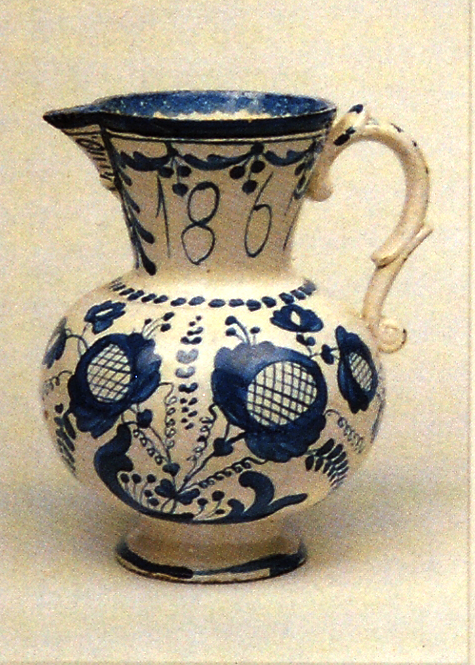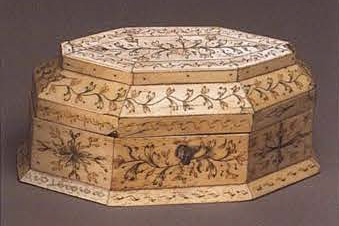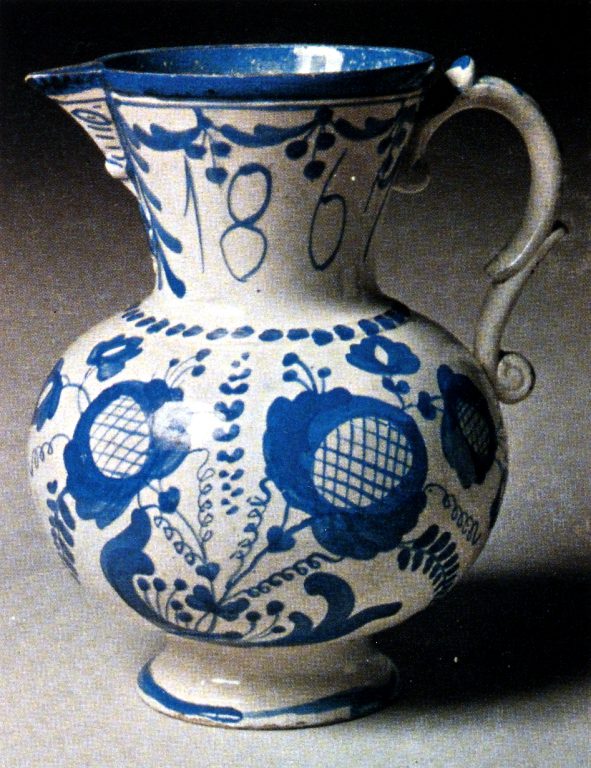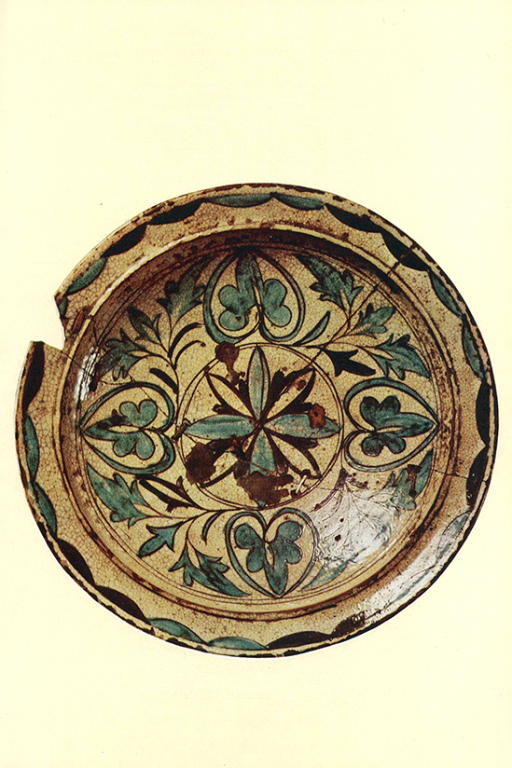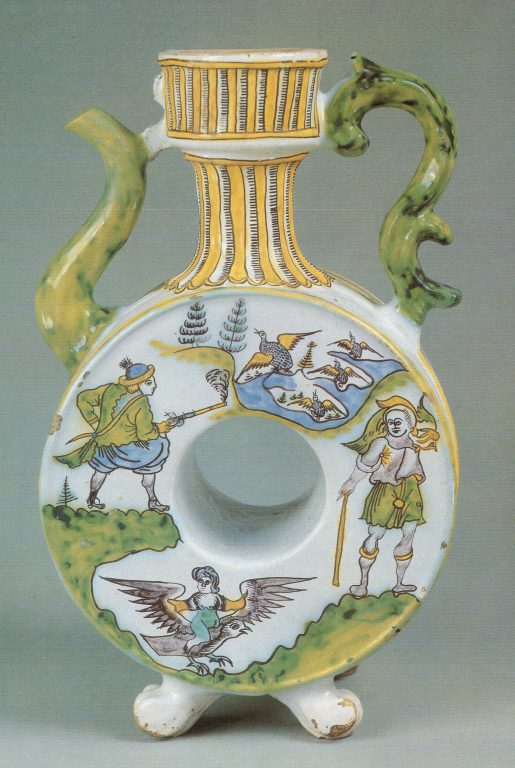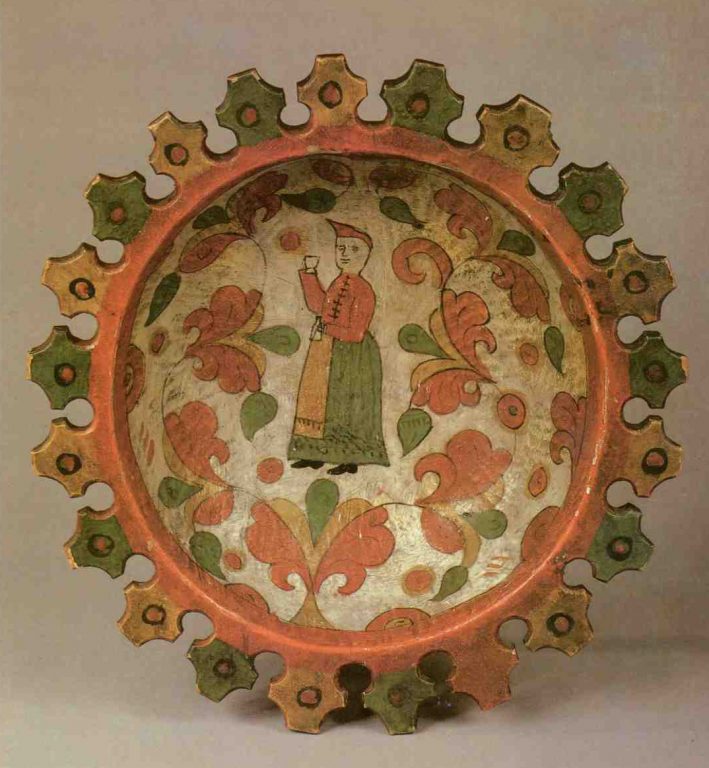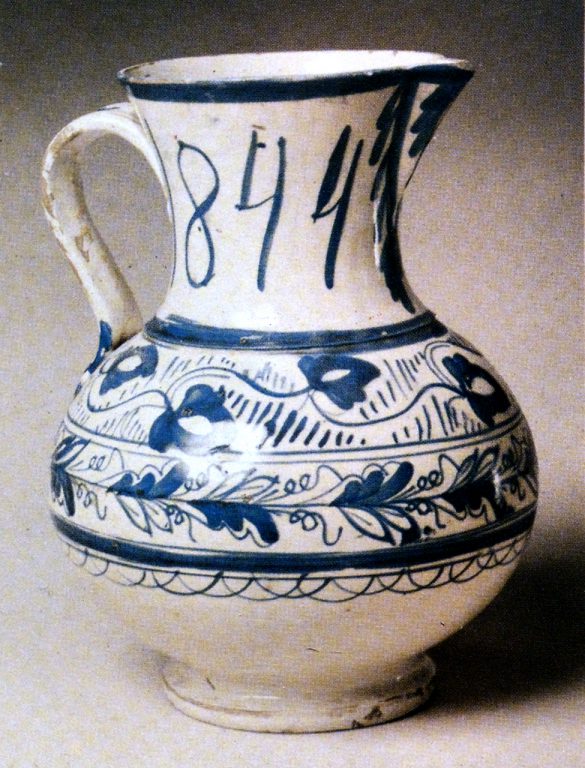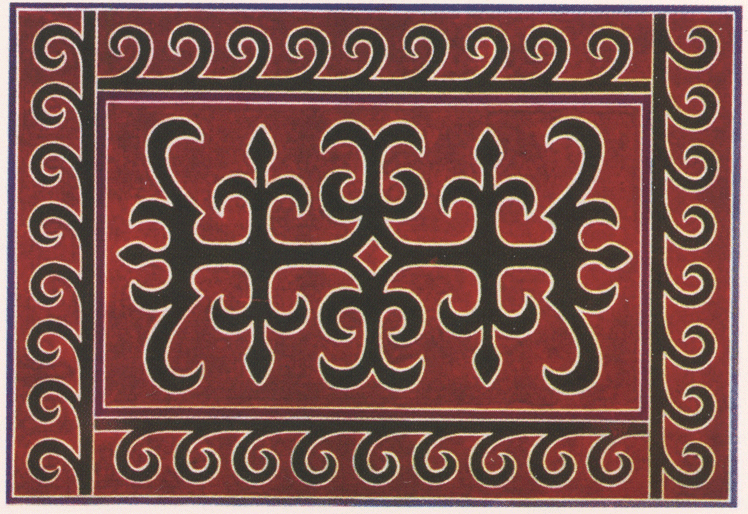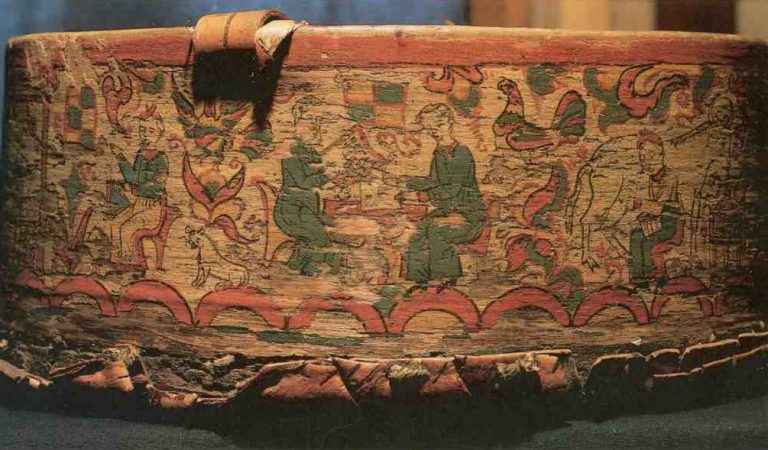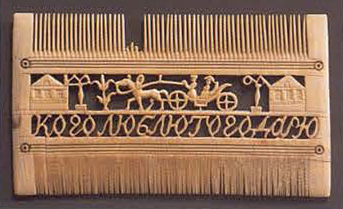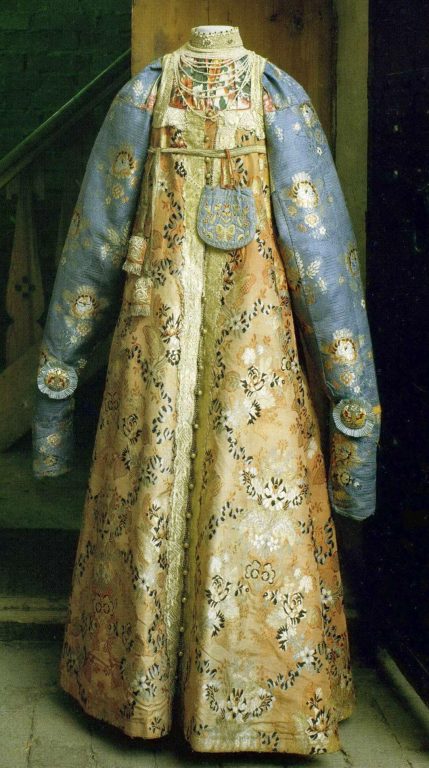

Ramensky district,
Ramensky region
-
Object
-
Type of arts & crafts
-
Technique
-
MediumSemifaience
-
Geography details
Village Gzhel,
Ramensky district,
Ramensky region -
Federal region today
-
Federal subject today
-
Date1867 year
-
Composition
-
Elements
-
Type of sourcephoto album “Gzhel. Ceramics of the 18th–19th Centuries. Ceramics of the 20th Century”
Author(s) T. Astrakhantseva, T. Dulkina, N. Grigorieva
-
Semifaience of Gzhel pitchers was as near-white as faience and china, shape and decoration were not copied. Floral design of Gzhel pitchers composed of several locked horizontal tiers, not infrequently with conspicuous, central frieze-like pattern. Pitcher carrying the hatched-flower garland were more common in thr 1850s and caught the fancy in the folk mentality of still earlier periods, was a typically Russian roundedess, that it was not always recognizable. Today in chinaware decoration Gzhel has developed upon its basis what is termed the “Gzhel Rose”. One specific element of the semifaience pitcher should necessarily be noted, namely the spout, the vessel’s sole geometrized element. Triangular, it was ever “humanized” by introducing eyes in order to accentuate the nose-like shape, an observation made by noted Russian folk arts and handicrafts scholar Alexander Saltykov, who was the first to really research the history and manufacture of Gzhel ceramics.


